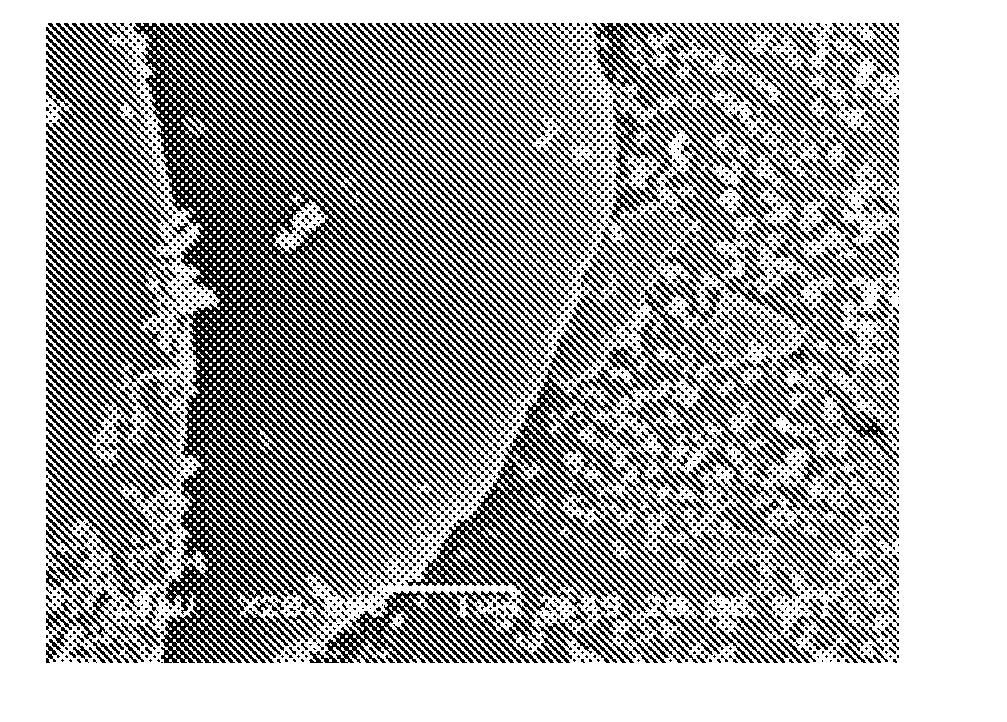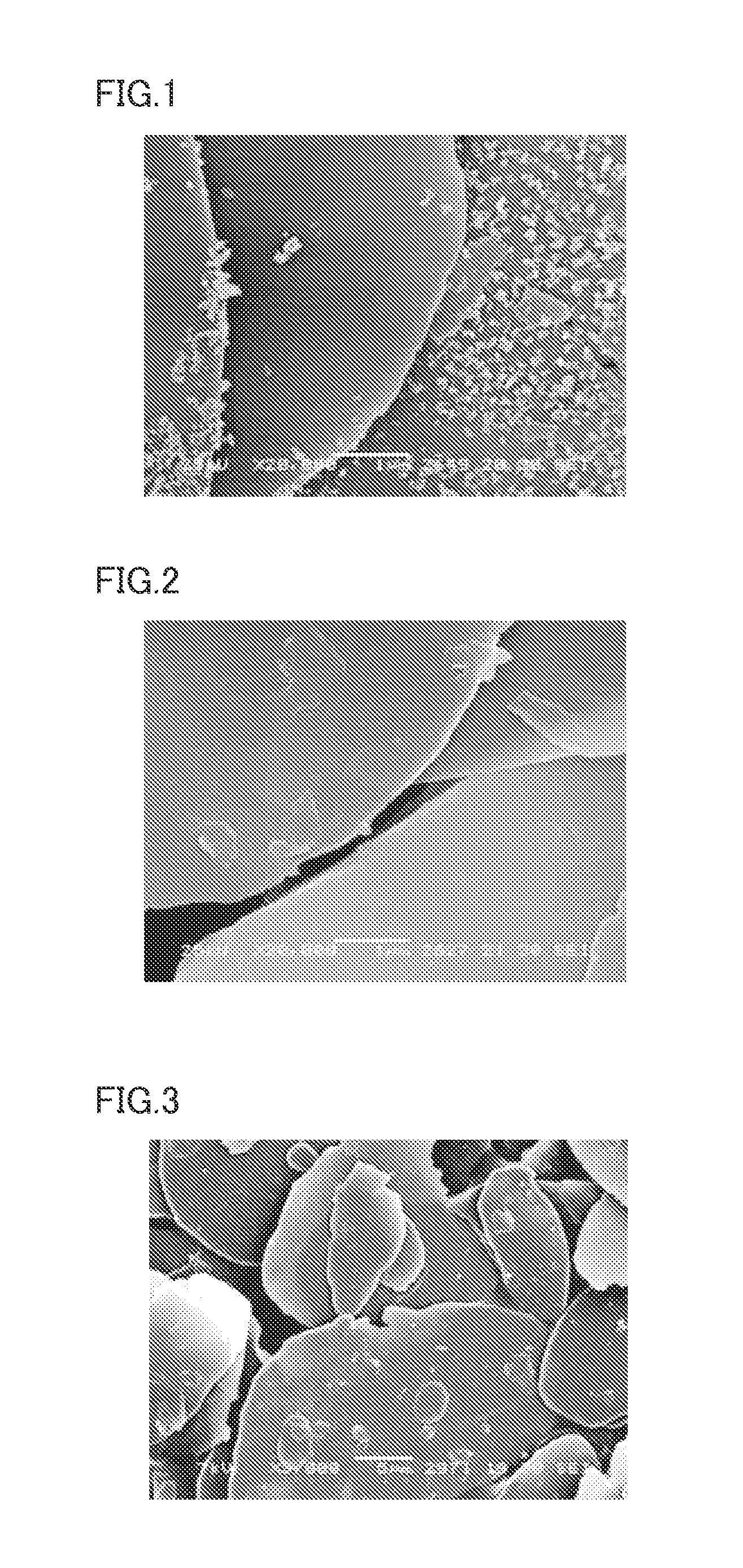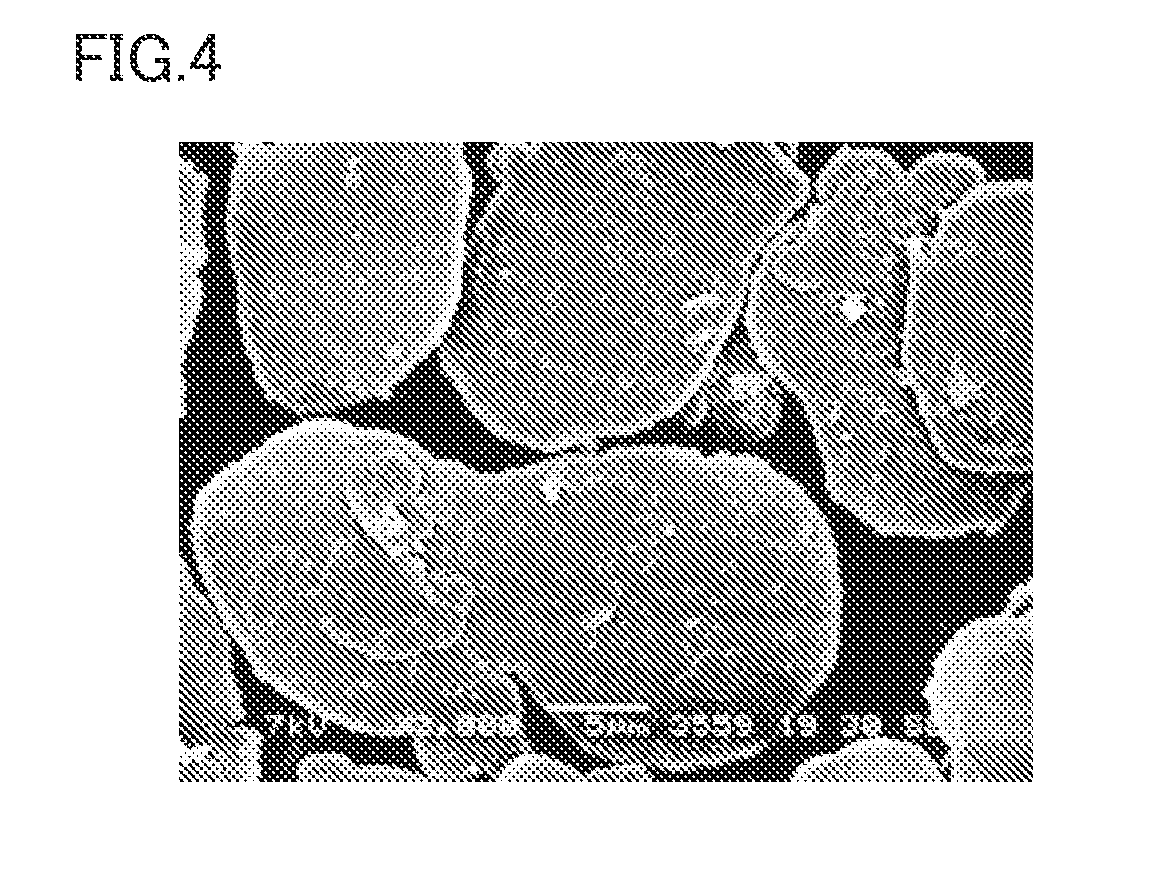Flake pigment, powder paint containing the same, powder-coated film obtained by coating with the powder paint using triboelectrification electrostatic coating apparatus, painted product on which film is formed, and method of manufacturing flake pigment
a technology of powder paint and flake pigment, which is applied in the field of flake pigment, and achieves the effects of high brightness of the film, excellent metallicity, and disadvantageous poor adhesiveness
- Summary
- Abstract
- Description
- Claims
- Application Information
AI Technical Summary
Benefits of technology
Problems solved by technology
Method used
Image
Examples
example 1
[0179]A paste containing flake particles (trade name “7640NS” manufactured by Toyo Aluminium Kabushiki Kaisha; containing aluminum flakes each having an average particle size of 17 μm and an average thickness of 0.4 μm as the flake particles) was charged in a filtering apparatus and the paste was washed with mineral spirit twice as much in amount as the paste. After sufficient filtration, kneading and mixing by using a kneader-mixer was performed for five minutes, a part of the paste was taken out, and a non-volatile component was quantified. Then, the non-volatile component occupied 80.3%. Then, 373.8 g washed paste was charged in the kneader-mixer, to which 195.8 g cyclohexanone was added, and the paste was kneaded and mixed until it became homogenous.
[0180]Then, 25.7 g copolymer A solution above was diluted with 502 g cyclohexanone, which was gradually added to the slurry above being kneaded and mixed. After addition, kneading and mixing was further continued for 20 minutes so th...
PUM
| Property | Measurement | Unit |
|---|---|---|
| particle size | aaaaa | aaaaa |
| particle size | aaaaa | aaaaa |
| particle size | aaaaa | aaaaa |
Abstract
Description
Claims
Application Information
 Login to View More
Login to View More - R&D
- Intellectual Property
- Life Sciences
- Materials
- Tech Scout
- Unparalleled Data Quality
- Higher Quality Content
- 60% Fewer Hallucinations
Browse by: Latest US Patents, China's latest patents, Technical Efficacy Thesaurus, Application Domain, Technology Topic, Popular Technical Reports.
© 2025 PatSnap. All rights reserved.Legal|Privacy policy|Modern Slavery Act Transparency Statement|Sitemap|About US| Contact US: help@patsnap.com



